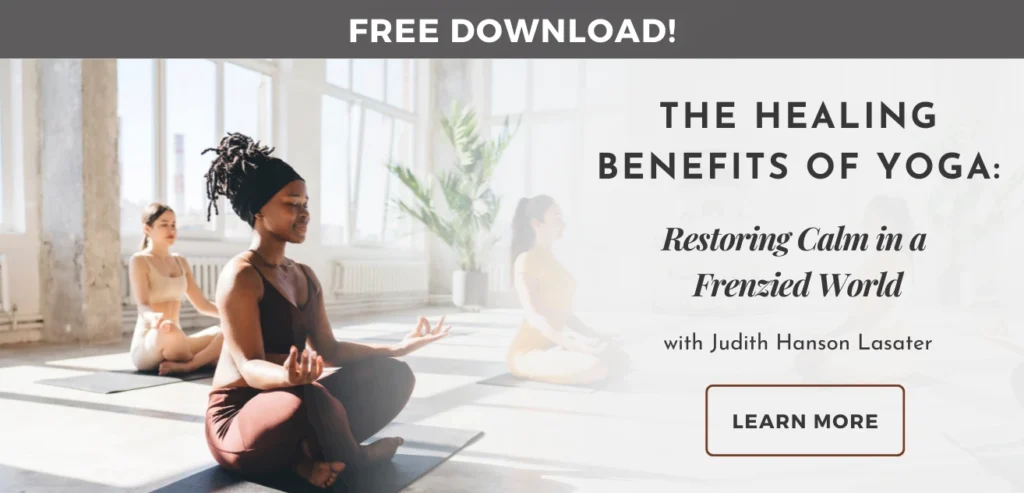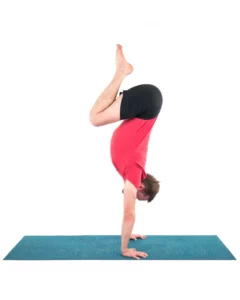What Stops You From Going Deeper in Yin Yoga?

When we look at different people from the outside, we recognize our many differences—differences in hair color, eye color, skin color, body shapes, hip sizes, and broadness of the shoulders. We know that each person has a unique fingerprint and dental imprint. We know that some people are tall while others are short; some have long legs, and others have long torsos. We know all too well that each of us is very unique and different. We know that there is extreme anatomical variation from person to person.
Yet, for some reason, when applying these differences in anatomical variation to a movement practice (such as yoga), we suddenly forget this intuitive knowledge. We assume that we all can twist and contort ourselves into the exact same shapes as the person practicing next to us. We assume that the end range of motion is uniform across all populations.
But just as our fingerprints are inherently different, so are our skeletal structures. Every last detail about us is different, including how our tissues operate and how we look on the inside.
Yin Yoga Can Exemplify Anatomical Variation

Yin yoga is a beautiful practice that is meditative and relaxing. It affects our connective tissues and nervous system, and can be deeply humbling. This is because the yin yoga practice works primarily with the hip joints and the spine. This is wonderful on so many levels because these joints tend to be neglected in modern society when we sit and slouch over devices all day long. However, it can also be challenging for many students to work with these joint structures.
This is because, for most people, the hip joint is a deeply set ball-and-socket joint. It’s incredibly stable, which allows us to walk, jump, and run with relative ease. However, this stability can sometimes come at the cost of mobility. (It’s worth the trade-off!)
The spine is made up of a multitude of various joints that often work together to create large back body movements—sometimes with greater or lesser range of motion in varying types of movements.
Often, when we see a lack of range of motion in various yin yoga poses, we assume that the body’s soft tissues are tight and need to be stretched. While this can be true, ultimately, our end range of motion is determined by the shape of our joints and our bone structure.
What Stops You When You Practice Yin Yoga?

There is a continuum of factors that could restrict the range of motion in various positions. When a student first starts practicing yin yoga, it’s quite possible that their connective tissues are tight, restricting their range of motion in various postures.
In Butterfly Pose (Baddha Konasana), for example, their knees are lifted high away from the floor, and they feel a deep opening in their inner thighs when they practice. But after enough practice, dedication, and time, there will come a point when they no longer feel a stretch in their inner thighs in Butterfly. Yet, for some students, their knees will still stay lifted high away from the floor even after they cease to feel a stretch. And yet another student may have their knees literally touching the floor in Butterfly the first time they ever try to practice this shape. Why would there be such a discrepancy from student to student? Anatomical variation.
Our connective tissues will all respond slightly differently to stretches and “release” and “open” at varying rates and degrees. Still, our bony structure is the ultimate definer of the end range of motion. Once bony landmarks reach their end range of motion in a joint (when they maximize the angles available at the joint space—which are also different for everyone!), then you can stretch and stretch your soft tissues all day long, but it will not change the hard compression at the end range of the joint. That is the final limit of the range of motion, and it is a hard definition of what would stop you in a yoga pose. And not surprisingly, it’s different from person to person—sometimes drastically different. Natural anatomical variation will define those ranges.
Anatomical Variation: The Continuum of What Stops You

Prominent yin yoga teacher Bernie Clark offers an excellent graphical representation of “what stops you” when working with yin yoga poses.
This continuum starts at the blockage of tensile restriction (tension in the soft, connective tissue that would cause tightness and lack of range of motion). In the Butterfly Pose example, this would be tension in the soft tissues (such as the ligaments, tendons, muscles, fascia, joint capsules, etc.) around the inner thighs and hip joints. The continuum then moves on to define harder-end ranges, with the ultimate restriction being bony compression, which occurs when bones meet at the end range of motion in a joint space. In Butterfly Pose, this would be when the thigh bone (known as the femur) compresses against the back of the hip socket (known as the acetabulum). This bony compression would be the hard limit that stops you from moving “deeper” into the pose. That end range of motion is the very end of your limit and cannot be changed.
The anatomical variation from person to person can be so different that one person may reach their end range of motion with their knees lifted high away from the floor while another may have their knees in direct contact with the floor. What we see on the outside does not define what we feel on the inside.
Let Anatomical Variation Inform and Liberate Your Yoga Practice
This can be quite liberating in your yoga practice. Because we all have different ranges of motion in every joint, we cannot all contort our bodies into every yoga pose we’ve ever seen on Instagram—and that’s the beauty of the practice! It’s deeply individual.
What we can do, instead, is accept the limitations of our own bodies and celebrate the incredible movement capacities that we possess.
Understanding anatomical variation also helps to bring us back to the focal point of a yoga practice. It’s really never about the shapes that we make with our physical bodies. It’s how those shapes inform our emotional and subtle bodies for a deeper spiritual practice.
Also, read...
Teaching Svadhyaya: 3 Ways to Encourage Self-Study in Yoga
In Celebration of Gray-Haired Yoga – Busting the Myth of the Yoga Body
Related courses

Leah Sugerman is a yoga teacher, writer, and passionate world traveler. An eternally grateful student, she has trained in countless schools and traditions of the practice. She teaches a fusion of the styles she has studied with a strong emphasis on breath, alignment, and anatomical integrity. Leah teaches workshops, retreats, and trainings, both internationally and online. For more information, visit www.leahsugerman.com.




